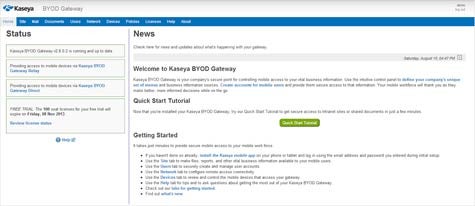Managing mobile devices that belong to the organization is one thing; managing mobile devices that belong to employees or corporate guests is quite another.
After acquiring Rover Apps earlier this year, Kaseya today unveiled the Kaseya BYOD Suite, a mobile computing management platform designed for IT organizations that need to manage mobile computing devices that don’t belong to them.
Kaseya already offers a mobile device management (MDM) platform. But Jonathan Foulkes, vice president of mobile product management, says the Kaseya BYOD Suite offers some unique attributes in the form of a container technology that while providing support for encryption also includes the ability to edit documents and then synchronize files with various cloud storage platforms.
Foulkes says that, ultimately, Kaseya will move to unify the management consoles provided by the existing Kaseya MDM platform and the new Kaseya BYOD Suite. But given the fact that organizations that own all the mobile computing devices on their corporate networks have different requirements than those that don’t, Kaseya plans to continue to make both offerings available to customers.
In terms of acquisitions, Kaseya has been on a tear of late. Not only did it acquire Rover Apps, it also acquired Zyrion to provide IT monitoring software and 365 Command to provide a cloud service for managing Microsoft Office356 deployments. The acquisitions, which occurred after the venture capital firm Insight Ventures took a controlling interest in Kaseya, are a sign that Kaseya intends to significantly expand the reach of its offerings to span everything from mobile computing devices to the cloud.
In terms of mobile computing, Kaseya is clearly trying to roll up a number of products and cloud services into a single offering that makes managing mobile computing more tenable for IT organizations that previously would have stitched all these tools together on their own.
With mobile computing rapidly becoming a much bigger IT priority, the issue at this point is not whether it’s occurring in the enterprise but how IT organizations are going to cope with it.




